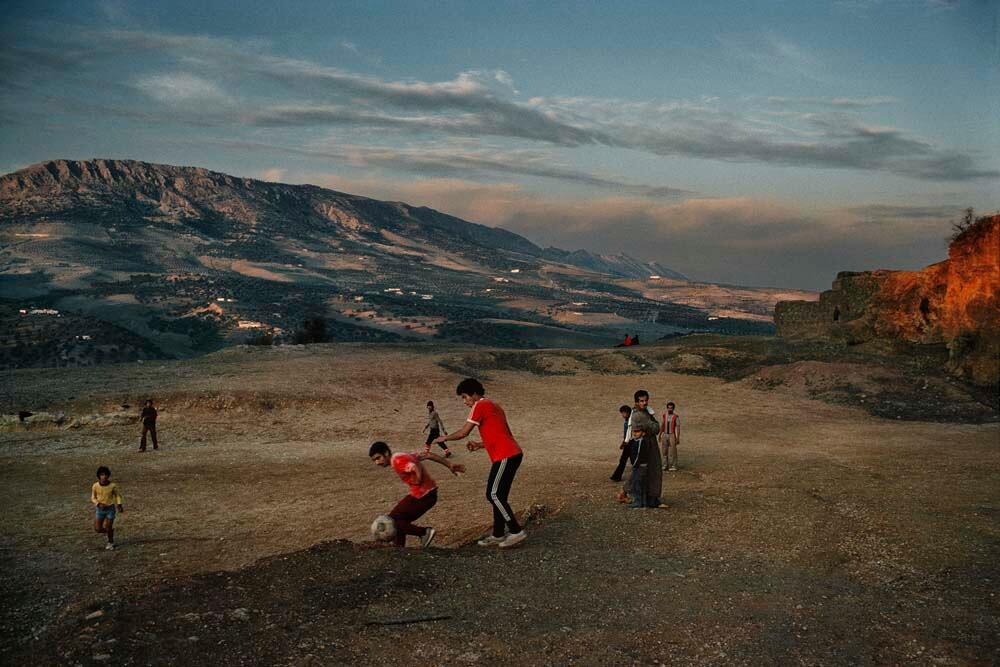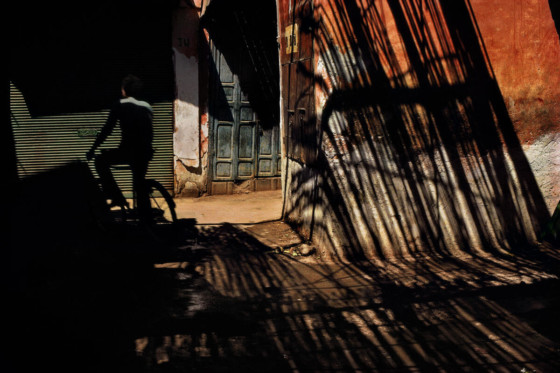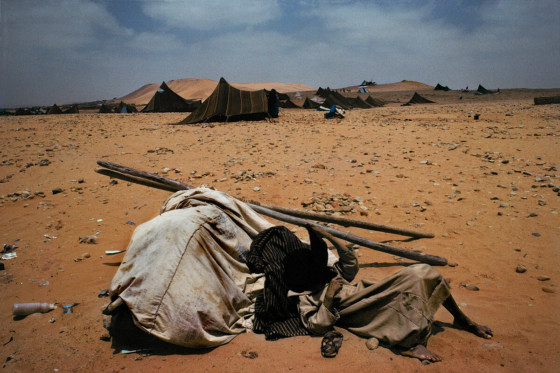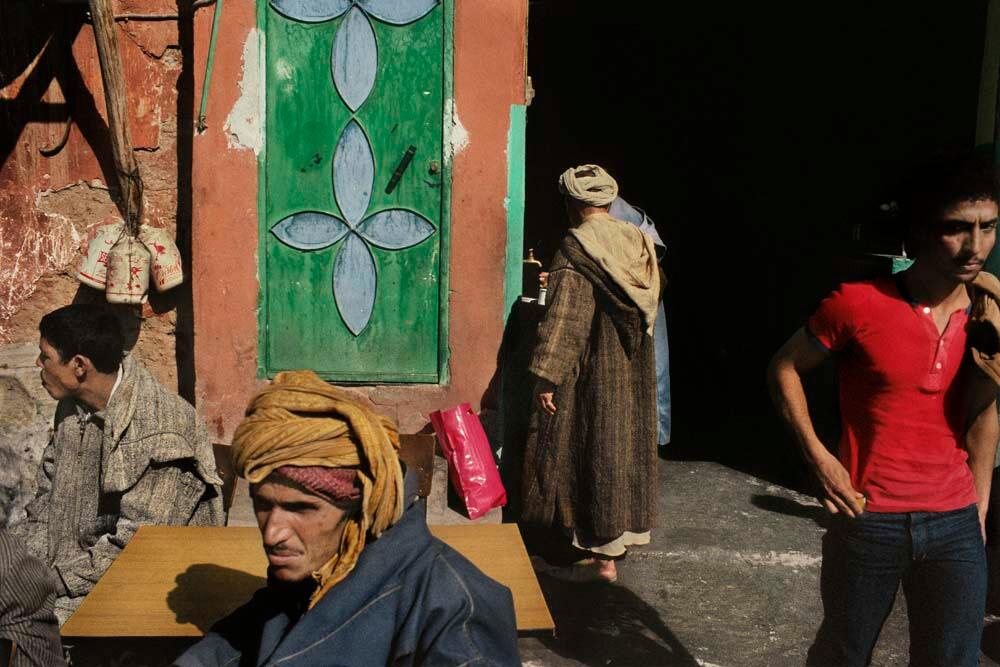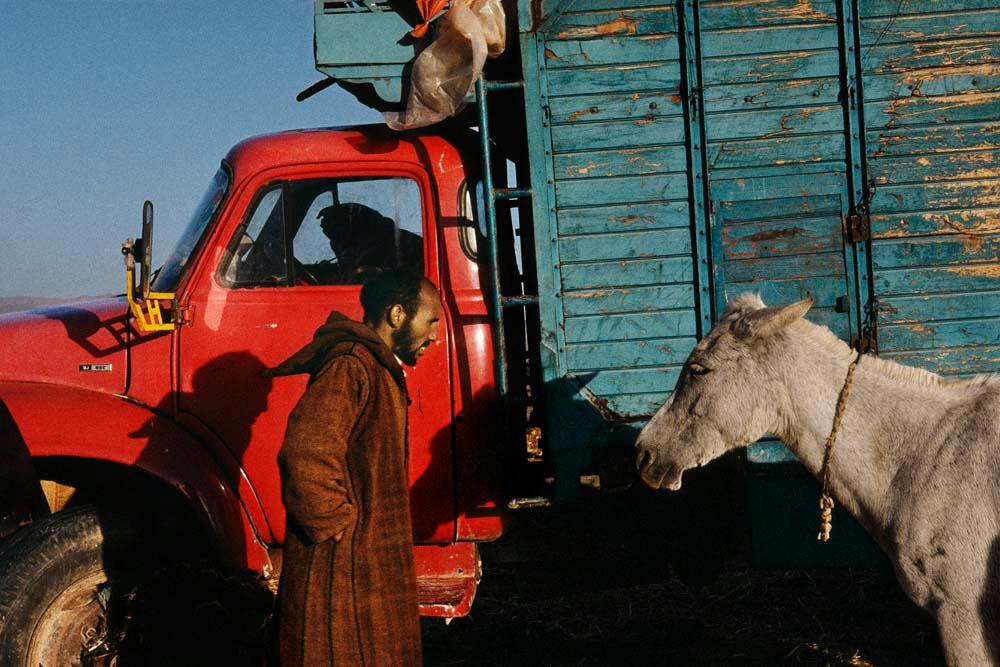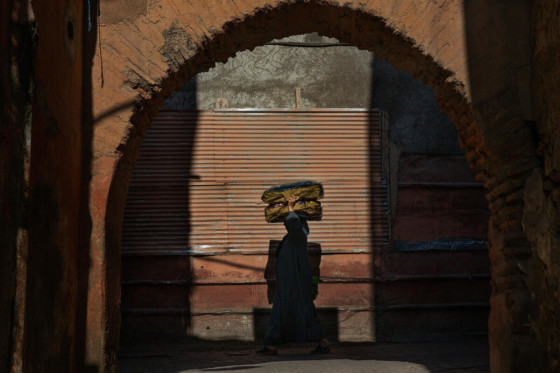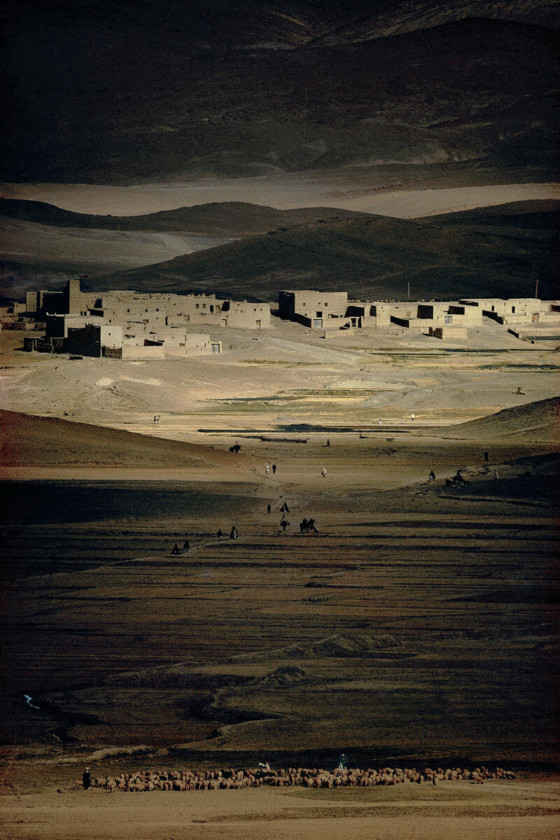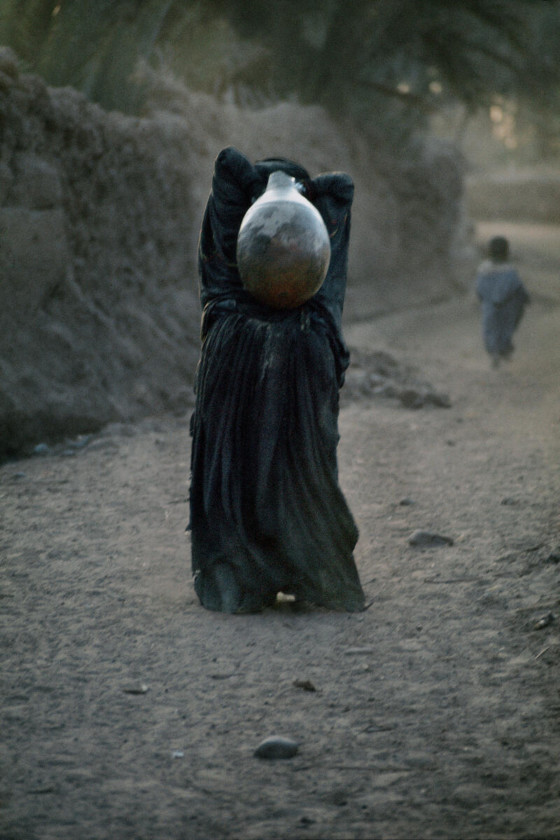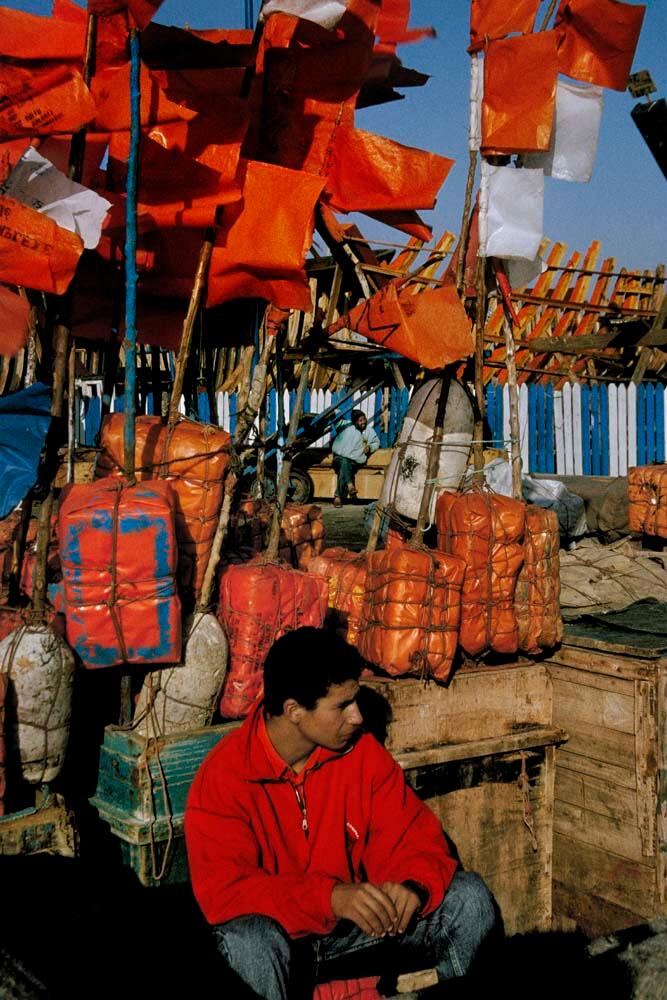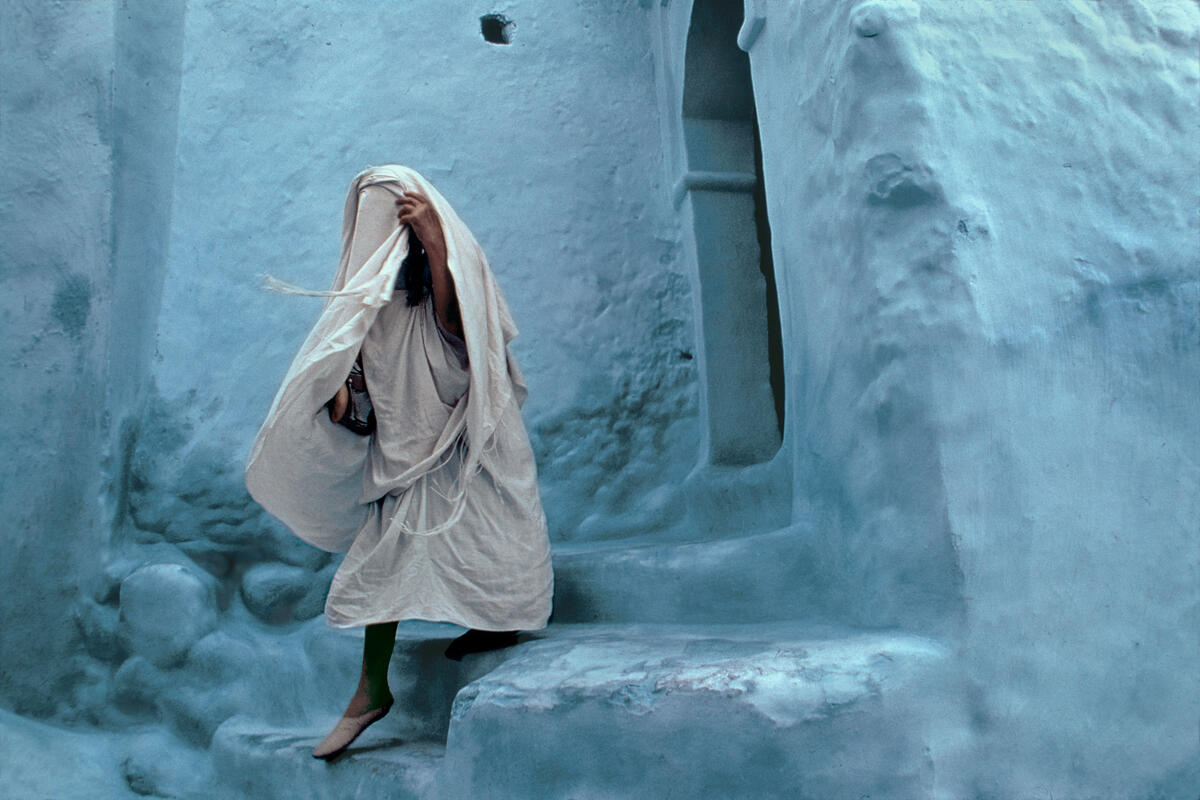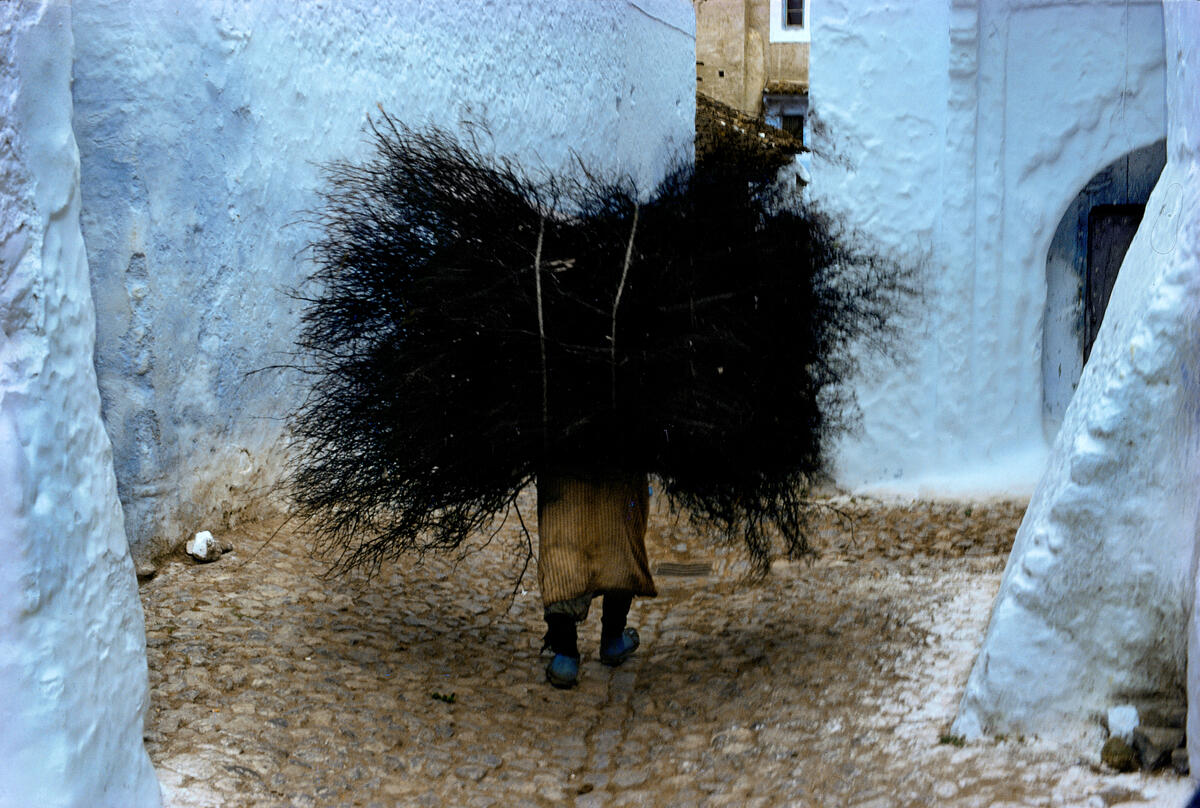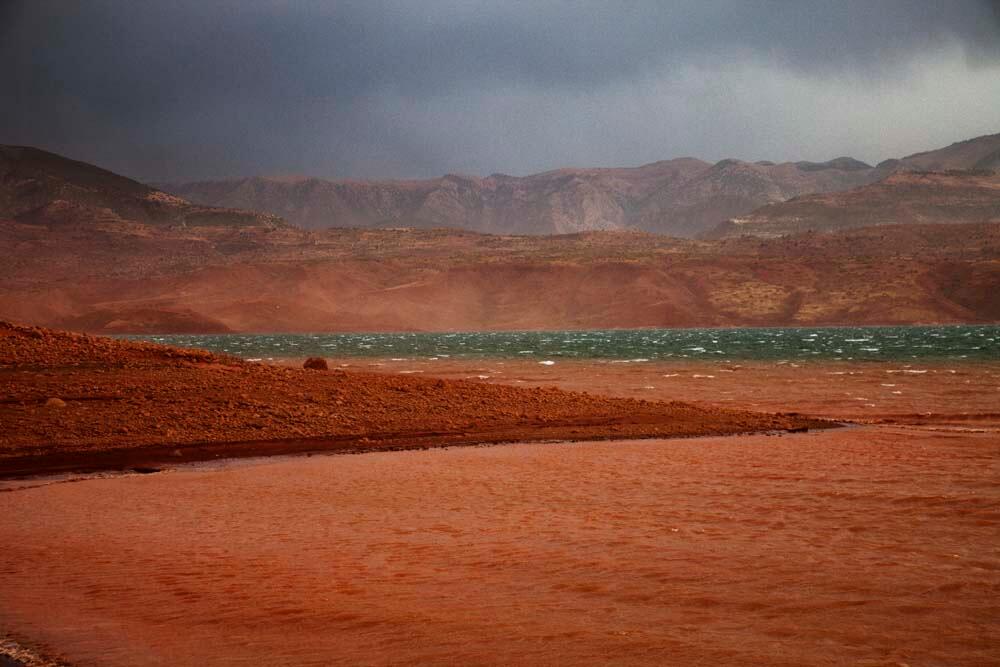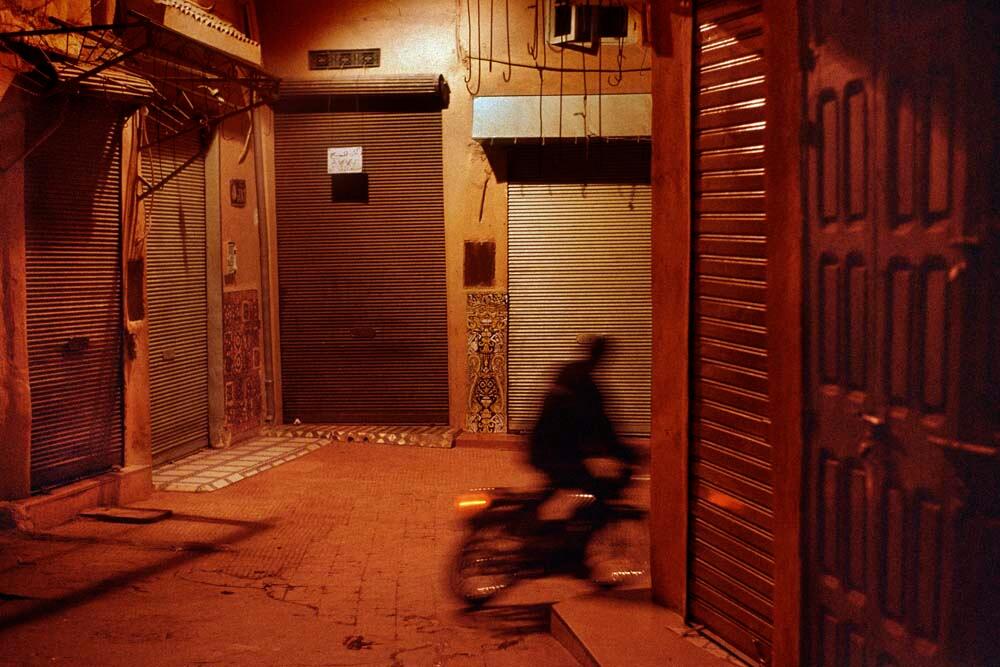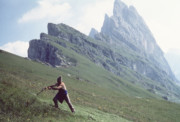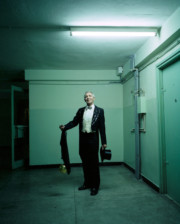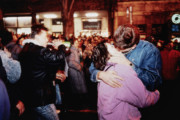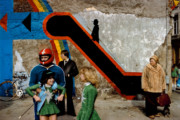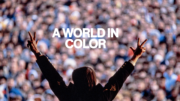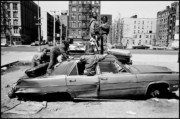Harry Gruyaert Returns to Morocco
For his new book, Gruyaert selected images from his archive of more than a half-century photographing Morocco. The work, unpublished until now, shows the country's people and landscapes from the perspective of a passionate outsider.
In the introduction to his new photo book, Morocco, Harry Gruyaert writes about his relationship with the country going back to 1972 and why it continues to motivate his curiosity. While there, he learned how to get close to people and to further develop his vision and unique photographic language, throwing himself completely into a range of rural and urban settings. “The thing that matters most to me in photography, and art in general, is the sense of sharing the experiences of the artist or creator, of being with them, of seeing what they have seen through their eyes. Morocco has bewitched me, and I want this book to be an expression of that magic.”
This is the third book by Gruyaert focusing on Morocco. The idea for it emerged while digging through his archives for a series of photomontages called A Sense of Place. The images featured in this latest volume, Morocco (2024), are different from those included in the two previous books from 1990 and 2013. He maintains that the photos included in the 2024 book say more about him than they do about the country itself, writing: “Perhaps influenced by the more cinematic approach of photomontage, this book is made up of a series of sequences or short trips, which serve as variations on the same theme: the fascination that this country has exerted on me for more than 50 years.”
"Everything’s a matter of balance between reality and yourself."
- Harry Gruyaert
Morocco is not a work of photojournalism. While it’s a discipline that he thinks deserves much respect and serves a purpose, it’s not what interests Gruyaert. Nor does he claim to have covered the country in its entirety or as an “objective reality,” but rather, he hopes his images communicate something essential about Morocco that helps people engage with and understand a different reality. “What’s important to me is that each photograph has its own power and the images can be linked together, read as a hymn of praise rather than as a story or a travel diary.”
Gruyaert has returned again and again to the places that have fascinated him, trying each time to capture images evoking the same emotions and curiosity as his initial trips. In the 1970s, he journeyed through Morocco many times in a Volkswagen camper van, notable stops along the way ranged from the High Atlas Mountains and the desert, to the Atlantic coast and the Mediterranean shore. “The way I work might seem rather like scouting for locations, in the filmmaking sense,” writes Gruyaert, “but most of all it reflects an obsession: the quest to relive a memorable moment in a place I have visited before a longing to experience again with greater intensity.”
"Making a photograph means both seeking contact and refusing it, being the most there and the least there at the same time... It's in this struggle that I find myself at my best."
- Harry Gruyaert
Vast differences became apparent in photographing and spending time with people in each place. Clothes, customs, and even reactions to a stranger being around — particularly a photographer — varied depending where he was working. He developed a knowledge of how to behave and found location-specific tricks while taking pictures in Marrakech, Fés, Essaouira, or Erfoud that allowed him to be accepted in each space, to an extent.
"What’s important to me is that each photograph has its own power and the images can be linked together, read as a hymn of praise rather than as a story or a travel diary."
- Harry Gruyaert
Throughout the book, several people cover their faces or turn away from the camera. Other times, people, animals and objects seem right at home in front of the lens. Gruyaert says, “Making a photograph means both seeking contact and refusing it, being the most there and the least there at the same time. In the field, it’s a real ‘battle’ with reality, a kind of trance to record an image or perhaps miss the whole thing. It’s in this struggle that I find myself at my best. Morocco is the expression of this particular tension, halfway between exaltation and rapture.”
Part of the enchantment for Gruyaert over all these years comes from finding the harmony between shapes, colors, nature, and the everyday gestures of people throughout Morocco. From stark shadows and silhouettes cutting against the washed-out paint of local architecture to the amalgamation of hues, patterns, and textures permeating everyday life and the painterly landscapes.
"Morocco has bewitched me, and I want this book to be an expression of that magic."
- Harry Gruyaert
The book is available on the Magnum Shop here.


